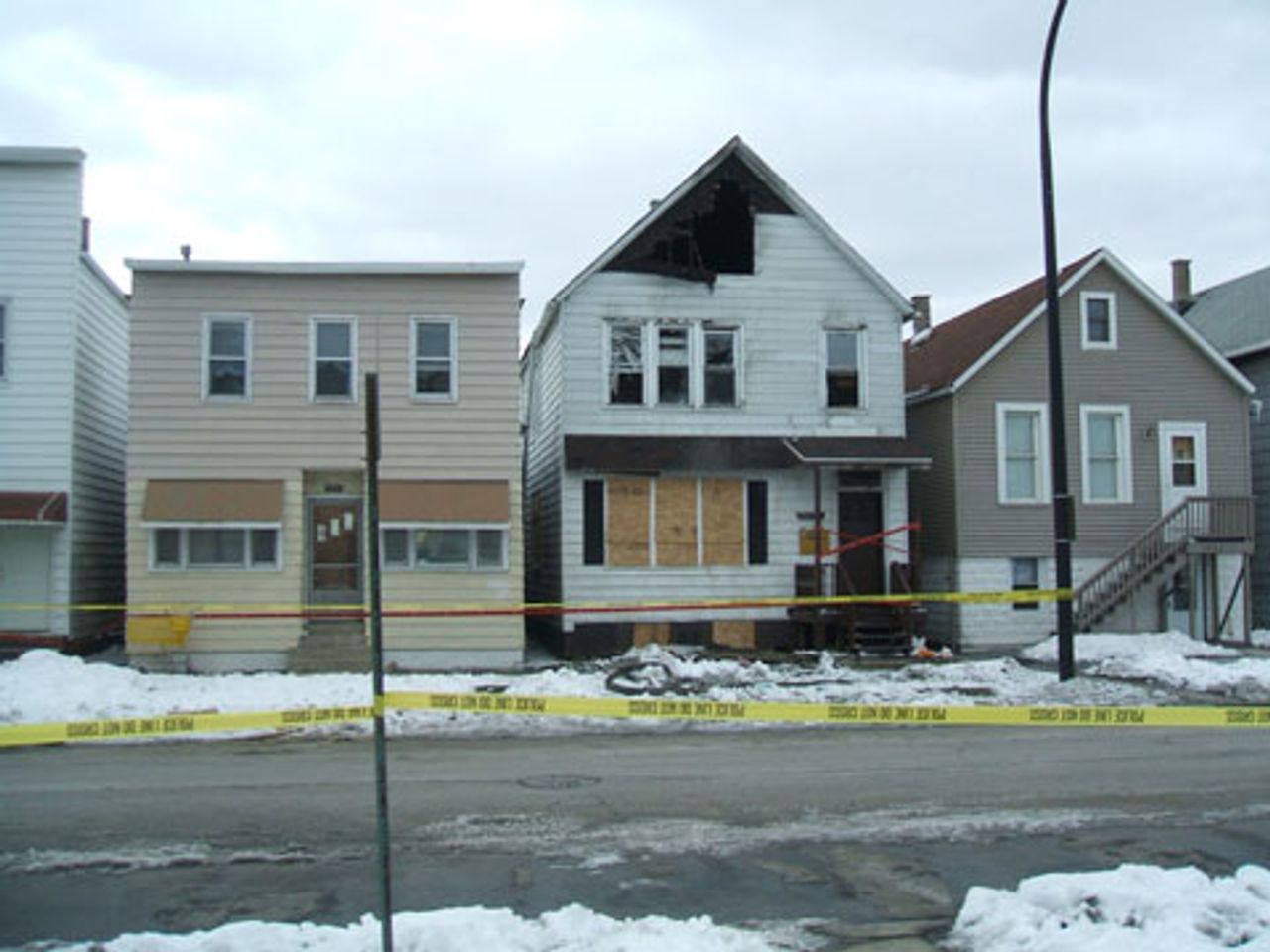 Scene of last Sunday’s fire on Chicago's southwest side
Scene of last Sunday’s fire on Chicago's southwest sideSeven young people, ranging in age from three days to 20 years old, were killed last Sunday morning when they could not escape from a burning apartment building on Chicago’s southwest side. While official reports have not given an exact cause of the fire, it is known that all the victims were sleeping in the attic of the building with only one exit, and that the three occupied units of the complex probably housed up to 40 people.
The fire took place in the working class neighborhood of Cicero. While most media reports have focused on the overwhelming tragedy of the event—the mother who survived, Allison Gist, lost seven children and grandchildren—almost no attention has been paid to the socioeconomic conditions that hover above this horrible event.
Certain details of the victims and their families have indicated that they were facing a difficult living situation. Neighborhood accounts vary as to how many people were living and sleeping in the two-bedroom space, but most agree that at least a dozen people regularly occupied the particular apartment and attic where the fire began. Neighbors have told reporters that Gist’s move to the cramped space two years ago was a “step up from where she had been living before.”
Gist’s 18-year-old daughter Sallie and her 20-year-old boyfriend Byron Reed, the parents of a three-day-old child and a three-year-old—all four perished in the fire—had been living with their mother while Reed attempted to get his GED (high school equivalency) and find employment. In a somewhat telling account, a neighbor offered a glimpse into the social conditions facing many working class people in Cicero and the surrounding region.
The Chicago Tribune reported how neighbors Ruben-Peter Molina and Connie Rodriguez-Molina had also escaped, “but now wonder how they’ll manage with no home. Rodriguez-Molina said she’s on food stamps and unable to work. They survive on her son’s salary from working at a local bookstore.”
Much of the media coverage has focused on the zoning ordinances and occupancy regulations in Cicero, implying that legal housing procedures are the underlying cause of this tragedy. Cicero Township spokesman Ray Hanania gave a statement explicitly asserting that notion:
“This building for some reason had multiple families living in it. That’s something that we’re going to have to look at. The federal government doesn’t allow us to go in and control these things anymore. But I think after this fire, it’s something we’re going to have to look at.”
Missing in statements like this is any acknowledgement of the conditions that have forced working class families to live in situations such as this one, which compounded the circumstances of the Cicero fire.
The vast majority of people in the neighborhood work in service sector or construction jobs. The median income of the neighborhood is $10,000 below the state average, and the neighborhood’s official unemployment rate is nearly 13 percent, exceeding both the state and national averages. Less than half of Cicero’s population over the age of 25 has a high school degree.
Workers in Illinois seeking a remedy to unemployment and lack of access to quality public education increasingly find that their situation grows worse by the day. The state currently faces a massive $13 billion budget deficit, and the city of Chicago has pledged to close at least 14 more public schools this year.
Workers in Cicero are not unique in facing the growing realities of this social crisis, and thus it should not be a surprise that families are forced to live in cramped living quarters or beyond “occupancy regulation limits.” In this sense, the Cicero fire is simply the worst-case scenario of a large array of increasingly bad situations for working class families who face mounting unemployment, cuts in social spending, and other regressive socioeconomic conditions.
It has already been well established that many families in the region could not get by financially without living in such cramped, dangerous conditions.
Between 1991 and 1997, officials from Cicero were forced to overturn occupancy limit ordinances because the federal government claimed it discriminated against Hispanics. Cicero has a population that is nearly 80 percent Hispanic, and a large proportion of this population are immigrants (nearly half of the residents are foreign-born) or children of immigrants, many of whom, out of necessity, live in conditions similar to that of the Gist family.
